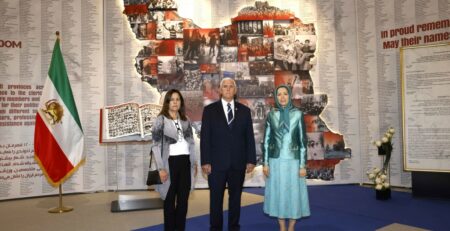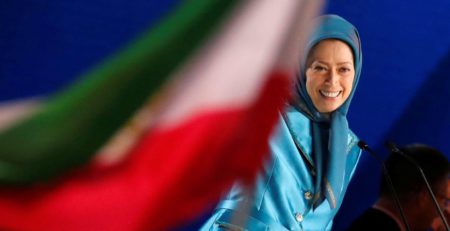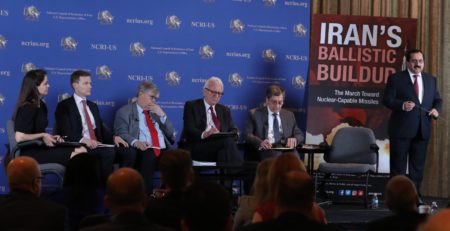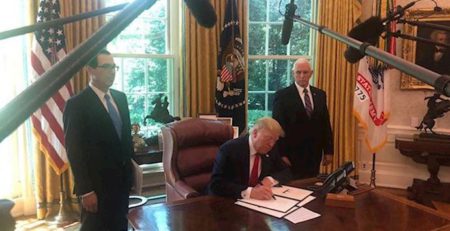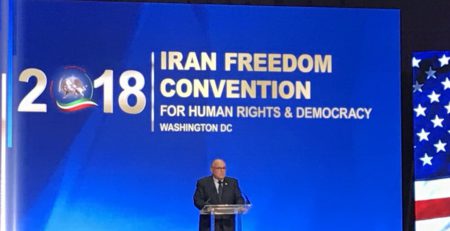Iran Nationwide Uprising and Role of MEK Resistance Units
NCRI | By Aladdin Touran | 26th September 2022
On September 16, 2022, a new wave of anti-regime protests broke out in Iran. The uprising was reported in at least 145 cities in all 31 provinces of the country, including 16 universities, by Sunday, September 25. On some days during this period, at least 30 locations in Tehran alone were the scene of protests.
Until now, more than 180 demonstrators have been killed due to shootings by the regime’s repressive forces. Hundreds have been injured, and more than 8,000 have been arrested to date.
As the protests continued and hit back against the reign of suppression, families of detainees converged at the gate of the notorious Evin prison, demanding the release of their loved ones.
People, particularly the youth, have faced off and confronted the regime’s brutal suppression. In dozens of cases, youths’ counterattacks released people who were arrested by the police force or plainclothes mobs (Basij militias affiliated with the Islamic Revolutionary Guard Corps or the Ministry of Intelligence). Several Basij members were killed during the clashes.
While the murder of Mahsa Amini in the custody of the so-called “Morality Police” provided the initial spark for the protests, from the very first day, people’s demands went beyond this tragic development, with protesters calling for the overthrow of the regime in its entirety. Some of the people’s slogans were as follows: “Death to the dictator,” “Death to Khamenei,” “I shall kill whoever killed my sister,” “Khamenei is a murderer, his rule is illegitimate,” “Death to the tyrant, whether it be the Shah or the Supreme Leader,” and “Even if we die, we will reclaim Iran.”
Features of the protests:
1- Protests have continued despite the regime’s brutal repression and widespread arrests.
2- The protests are nationwide. The cities and provinces that were largely quiet during the 2009 and 2019 uprisings have now risen up with unified slogans, demanding the regime’s downfall in its entirety, chanting their slogans in the most straightforward form, and focusing on the highest authority of the regime, Supreme Leader Ali Khamenei.
3- Simultaneous protests in large cities and in Tehran, where sometimes 30 locations were impacted – in the north, south, center, east, and west of the city – all express similar demands. This is the first time that all parts of Tehran have been involved in an uprising. The capital has a population of 10 million people, with broad class disparities and economic and social inequalities. The current situation shows that the uprising is supported not just by one or a few select social sectors but rather by the entire society in Iran.
4- A wide range of social groups are participating in demonstrations across the country, including the underprivileged classes, which were once falsely viewed as the social base of the regime, as well as the middle class and intellectuals. Thus, there is a fusion of intellectuals and the more underprivileged cross-sections of society, all united in demanding the regime’s overthrow.
5- The sheer determination of the people, especially that of the youth, and their decisive approach against the regime’s brutal repression have led to the emergence of an omnipresent and conspicuous fighting spirit in stark contrast to a submissive, defeatist, and passive attitude.
6- Posters, banners, statues of Khamenei, Qassem Soleimani, and other regime leaders, or anything bearing the regime’s insignia, were torched by youth in most cities.
7- And most importantly, the organized nature of the protests has led to their persistence and resilience.
The strategy of Resistance Units
– One of the major characteristics of these protests is the direct and indirect role of the Resistance Units affiliated with the Mujahedin-e Khalq (MEK) in organizing and, more importantly, working to prolong them.
– Beginning in 2014, MEK organized the Resistance Units, which, while affiliated to the organization, are ordinary citizens with regular ties and communication with others around them, in the workplace, in offices, hospitals, and in society in general. The objective conditions in society, i.e., the unresolved and profound social and political grievances, facilitated the formation of the Resistance Units.
The formation of Resistance Units
– Over the past few years, Resistance Units were gradually set up throughout the country and started their activities by writing slogans, distributing messages from the Iranian Resistance’s leadership, or installing posters in public venues, among others.
– One of the essential features of Resistance Units is that their members are integrated within the broader society. Most are students, employees, workers, or have other occupations. They are not covert forces. The presence of the members of the Resistance Units in their respective communities affords them the opportunity to have the basic necessities and, at the same time, the capacity and flexibility to regroup and reconstitute their teams if required.
– In the past few years, hundreds of members of Resistance Units and thousands of other people have been arrested due to their connection with Resistance Units. Some have been subjected to the most severe forms of torture, while others have been sentenced to long-term prison and even execution. But despite the severe repression and widespread arrests, the regime has not been able to eradicate the Resistance Units. On the contrary, the trend of the formation of Resistance Units has seen a rise throughout the country.
– The Resistance Units, initially teams of several people, have become larger groups and units in the process of their growth and evolution. Considering Iran’s thick veil of repression, they have nonetheless established effective levels of communication among the various Resistance Units.
– 1,000 Resistance Units sent video messages (while acting in accordance with security guidelines) from inside Iran to the Free Iran World Summit in July 2021, emphasizing their resolve to continue fighting until the overthrow of the regime.
– 5,000 members of the Resistance Units sent similar video messages from inside Iran during the Free Iran World Summit in July 2022, unveiling a 500% growth in the number of these units despite the regime’s brutal reign of terror and repression.
The role of Resistance Units in the recent protests
– The role and functions of Resistance Units in recent protests are multifaceted. Resistance Units have been actively present in the protests and played a leading role in many areas. The slogans of these protests, which were fundamentally unified throughout the country, are an indication of the uprising’s organized nature. Such organization is one of the primary functions of Resistance Units.
– As part of its ploys, the regime sent paramilitary Basij Forces to infiltrate protesters as ordinary individuals, tried to create divisions among protesters using diversionary slogans, and attempted to focus demands on civic matters. Resistance Units were able to neutralize such plots and focused slogans sharply on the imperative to overthrow the regime while also condemning all kinds of other dictatorships. They also expelled the regime’s lackeys from the protesters’ ranks after identifying them.
– Another function of Resistance Units was to confront the oppressive forces of the regime, specifically the “plainclothes” agents who played a crucial role in suppressing the protests of 2019 and 2017. By engaging the agents of repression, these Resistance Units, in addition to repelling the forces of repression in many cases, raised the spirit of defiance in protesters. These acts played a decisive role in prolonging the uprising.
– The function of Resistance Units is not limited to protests. Their activities, especially during the past year, have had a serious impact on cracking the wall of repression throughout the country. Among such activities was the torching of the statue of Qassem Soleimani, the former Quds Force commander, only a few hours after its unveiling. Following this bold action, regime authorities reacted with desperation and acknowledgment of the fact that Resistance Units are becoming a force to be reckoned with.
– Burning and targeting the regime’s centers of repression, which are highly despised in society, provided an inspiration and a practical model for many young people during the recent protests. The Resistance Units’ activities have thus triggered and spread the spirit of Resistance and the ability to stand up to the regime and its repressive forces among the younger generations.
– Resistance Units ensure that protests are sustained and organized. They have become role models for the younger generations, showing them the viable way forward in challenging the regime.
– On the anniversary of Khomeini’s death, Resistance Units, with the help of infiltrators in the regime, carried out extensive operations during which they controlled and destroyed 5,138 CCTV cameras installed in Khomeini’s mausoleum, government centers, and various other institutions. In another act of Resistance in early 2022, they managed to take control and broadcast messages by Mrs. Maryam Rajavi on multiple state television channels, which made an enormous impact on the general population that had never experienced such interruptions on state television for the past 43 years.
– The regime’s top leaders, as well as various senior and lower-ranking officials, constantly express worry and anxiety over the growing role of the MEK and its Resistance Units inside Iran.
Conclusion
Beyond the sporadic protests or even nationwide uprisings, developments in today’s Iran reveal a path that will lead to a democratic revolution. The Iranian people, who overthrew the monarchical dictatorship in 1979 and are today rising up against the ruling religious dictatorship, are paving the way for a new democratic revolution. This revolution rejects all forms of dictatorship and rule by an individual, whether it be a hereditary dictatorship or one that operates under the guise of religion or in the name of God. The Iranian people reject misogyny and recognize full gender equality in all aspects, especially in political leadership. This will be a revolution in favor of a democratic republic based on the separation of religion and state.
The persistence of anti-regime demonstrations throughout the country and the passion and enthusiasm of the younger generations to confront the repressive forces represent the broader society’s nod in favor of the strategy of the MEK and the Iranian Resistance to overthrow the regime while rejecting all theories that urge cooperation with segments of the repressive forces such as the IRGC. A democratic revolution in Iran is on its way. The overthrow of the mullahs’ regime may happen sooner or later. But there is no doubt that it will happen.
Iran: The Nationwide Uprising and the Role of MEK Resistance Units
